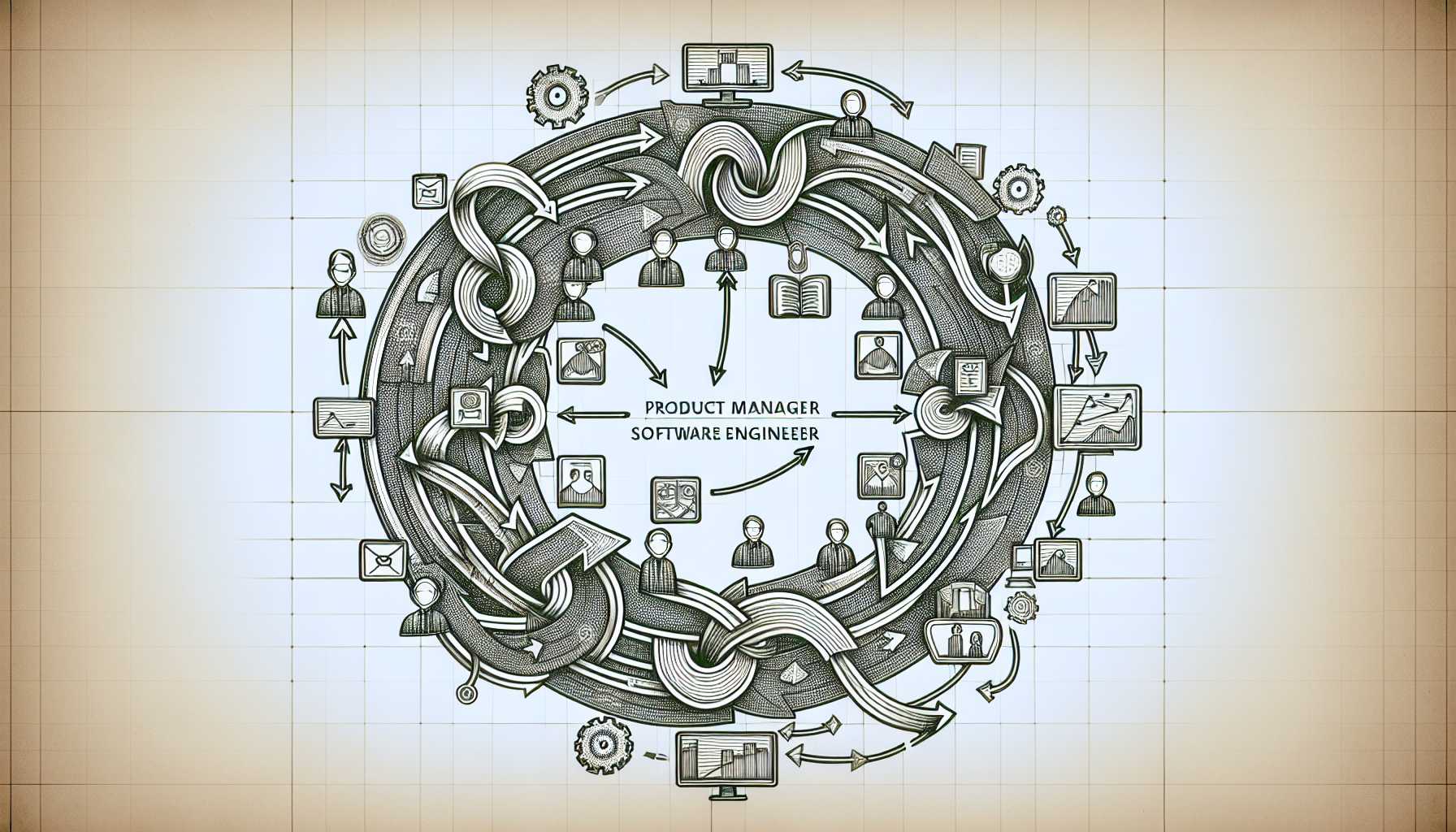In every tech product’s life cycle, the collaboration between product managers (PMs) and software engineers is crucial. Drawing from my tenure steering the development of various software products, I’ve witnessed the profound impact that effective collaboration can have on both the process and outcome of product development. In this article, I’ll share some of my tried-and-true strategies that enhanced the working synergy between PMs and engineers, ultimately contributing to the success of our products.

Establishing a Shared Vision
One of the foundational elements for effective collaboration is aligning both PMs and engineers to a shared vision for the product. This goes beyond the technical specifications and roadmaps—it’s about ensuring everyone understands and commits to the overarching goals and mission of the product.
In my past projects, we facilitated joint vision-setting workshops early on. This helped to create a unified direction and bolstered enthusiasm amongst the team. When engineers understand the ‘why’ behind their work, they’re more apt to go that extra mile, think creatively, and take ownership of the product’s success.
Communication and Transparency
Open and clear communication is the lifeblood of PM-engineer collaboration. It’s essential to establish channels and processes that enable both sides to share ideas, feedback, and concerns. Regular stand-ups, sprint reviews, and retrospectives are part of the Agile methodology that we’ve found indispensable in maintaining a consistent dialogue.
In a complex integration project, we had to mediate between multiple engineering teams and PMs. By implementing a structured communication protocol and utilizing tools like Slack and JIRA, we achieved greater visibility across tasks and were able to address blockers more proactively.
Technical Understanding and Respect
Another critical strategy is cultivating a culture of mutual respect and understanding. PMs don’t need to be expert coders, but a solid grasp of the engineering challenges and technologies involved helps in setting realistic timelines and making informed decisions.
I recall an instance when a PM oversimplified the complexity of implementing a certain feature, leading to tension and distrust. To combat this, we initiated ‘tech days’ where PMs could learn about the technologies at play in a non-pressure environment. This investment paid off manifold, nurturing empathy and a mutual respect between the disciplines.
Empowerment and Trust
Empowering engineers by giving them decision-making power in their domain is paramount. The most successful PM-engineer collaborations I’ve facilitated have been those where the engineers felt trusted to make significant technical decisions without constant oversight.
When our engineering team led the charge to refactor key components of our software architecture, I saw collaboration at its best. Ownership and trust motivated the team, leading to innovative solutions and high-quality execution.
Embrace the Power of Feedback
Feedback is a powerful tool that is too often overlooked. Creating a culture that encourages ongoing feedback can dramatically improve how PMs and engineers work together. This includes celebrating successes, constructively discussing failures, and always looking for ways to improve collaboratively.
We incorporated a ‘feedback loop’ mechanism in our sprints. Whether it was a PM’s strategic insight or an engineer’s technical perspective, feedback was solicited, valued, and acted upon. This reinforced a sense of teamwork and improved our processes on a continual basis.
Facilitating Professional Growth
Finally, I’ve learned that supporting professional growth for both PMs and engineers fosters a collaborative atmosphere. When team members feel invested in and see a pathway to growth, they are more committed and collaborative.
We introduced regular ‘growth chats’ and ‘interest groups’ within the organization. These sessions allowed team members to explore new skills, share interests, and inspire each other, which in turn led to a more innovative and cooperative work environment.
Conclusion
Enhancing collaboration between PMs and software engineers is not a one-off task but an ongoing commitment to nurturing a culture of communication, respect, and trust. By focusing on a shared vision, having transparent communication, building mutual technical understanding, empowering team members, embracing feedback, and supporting professional growth, we can pave the way for seamless collaboration that drives product innovation and success.
As product leaders, it is our mandate to champion these strategies and create environments where PMs and engineers can thrive in their partnership. Not only does it result in better products, but it also makes the journey of building those products more enjoyable and fulfilling for everyone involved.
